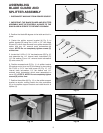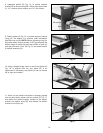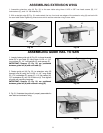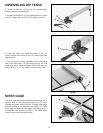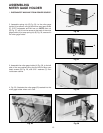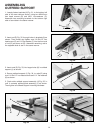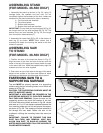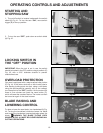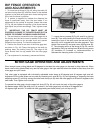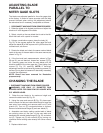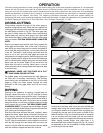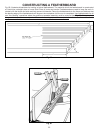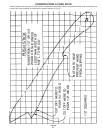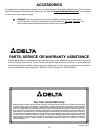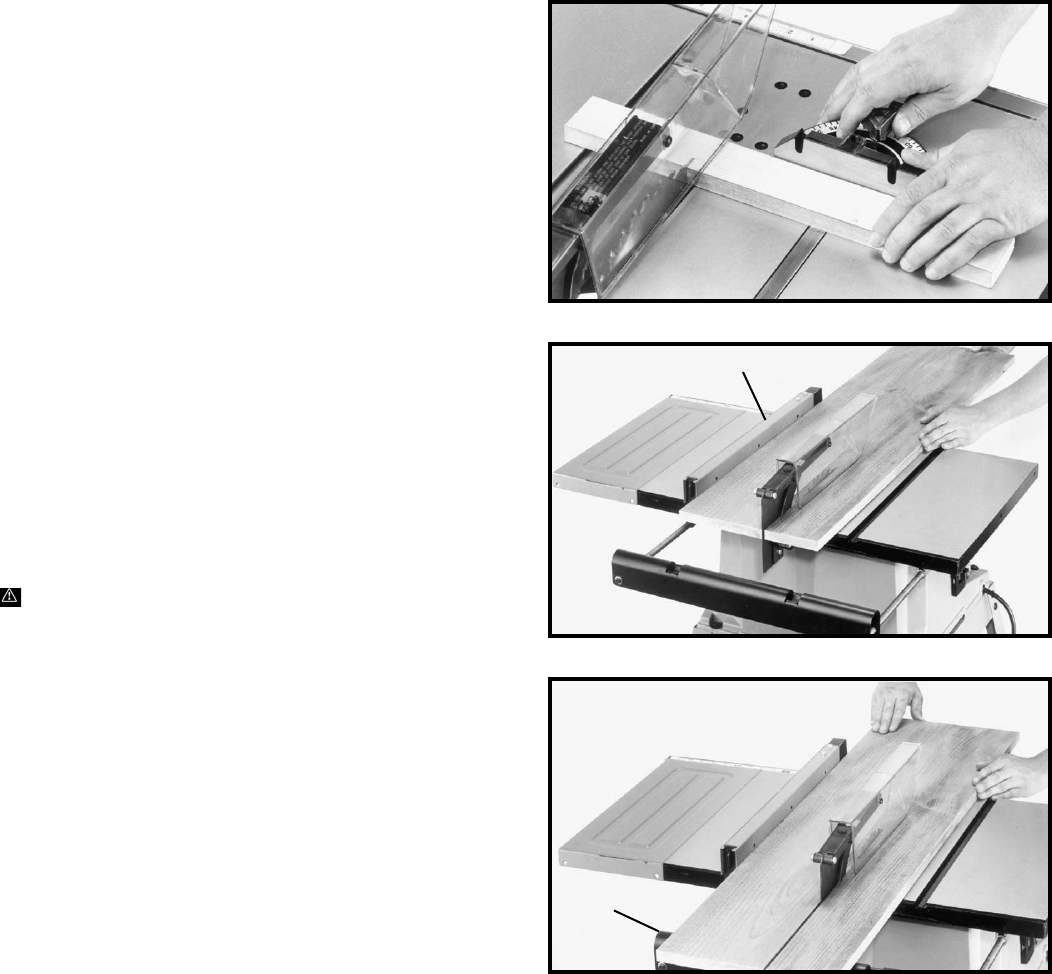
20
OPERATION
Common sawing operations include ripping and cross-cutting plus a few other standard operations of a fundamental
nature. As with all power tools, there is a certain amount of hazard involved with the operation and use of the tool.
Using the tool with the respect and caution demanded as far as safety precautions are concerned, will considerably
lessen the possibility of personal injury. However, if normal safety precautions are overlooked or completely ignored,
personal injury to the operator can result. The following information describes the safe and proper method for
performing the most common sawing operations. Additional information on table saw operations can be obtained from
the Delta “Getting the Most Out of Your Table Saw” How-To-Book, Catalog No. 11-400.
Fig. 54
Fig. 55
Fig. 56
to the end of the table, after which the work is lifted and
brought back along the outside edge of the fence. The
cut-off stock remains on the table or tilts up slightly and
is caught by the rear end of the guard or slides off the
table to the floor. If the cut-off stock remains on the table
it is not touched with the hands until the saw blade is
stopped, unless it is a large piece allowing safe removal.
When ripping boards longer than three feet, it is
recommended that outfeed support (B) Fig. 56, should
be extended as far out as possible to keep workpiece
from falling off the saw table.
CROSS-CUTTING
Cross-cutting requires the use of the miter gage to
position and guide the work. Place the work against the
miter gage and advance both the gage and work toward
the saw blade, as shown in Fig. 54. The miter gage may
be used in either table slot. When bevel cross-cutting
(blade tilted) only use the miter gage in the right table
slot where the blade is tilted away from the miter gage
and your hands. THE SAW GUARD MUST ALWAYS BE
USED.
Start the cut slowly and hold the work firmly against the
miter gage and the table. One of the rules in running a
saw is that you never hang onto or touch a free piece of
work. Hold the supported piece, not the free piece that
is cut off. The feed in cross-cutting continues until the
work is cut in two, and the miter gage and work are
pulled back to the starting point. Before pulling the work
back it is good practice to give the work a little sideways
shift to move the work slightly away from the saw blade.
Never pick up any short length of free work from the
table while the saw is running. Never touch a cut-off
piece while the saw is running unless the piece is at least
a one foot long.
WARNING: NEVER USE THE FENCE AS A CUT-
OFF GAGE WHEN CROSS-CUTTING.
For added safety and convenience the miter gage can
be fitted with an auxiliary wood-facing. This auxiliary
wood-facing can be fastened to the front of the miter
gage by using two wood screws through the slots
provided in the miter gage body and into the wood-
facing.
RIPPING
Ripping is the operation of making a length-wise cut
through a board, as shown in Fig. 55, and the rip fence
(A) is used to position and guide the work. One edge of
the work rides against the rip fence while the flat side of
the board rests on the table. Since the work is pushed
along the fence, it must have a straight edge and make
solid contact with the table. THE SAW GUARD MUST
ALWAYS BE USED. The guard has anti-kickback fingers
to prevent kickback and a splitter to prevent the saw kerf
from closing and binding the blade.
Start the motor and advance the work, holding it down
against the fence. Never stand in the line of the saw cut
when ripping. Hold the work with both hands and push
it along the fence and into the saw blade as shown in
Fig. 55. After the workpiece is on the table the work can
then be fed through the saw blade with one hand, as
shown in Fig. 56. After the work is beyond the saw blade
and anti-kickback fingers the feed can continue
A
B



